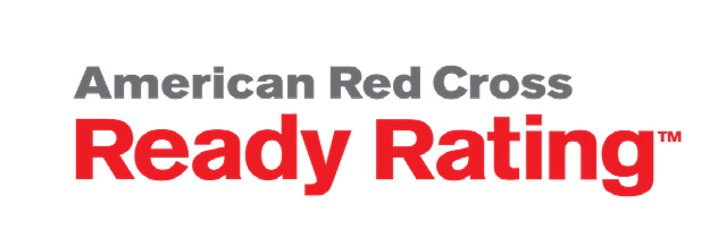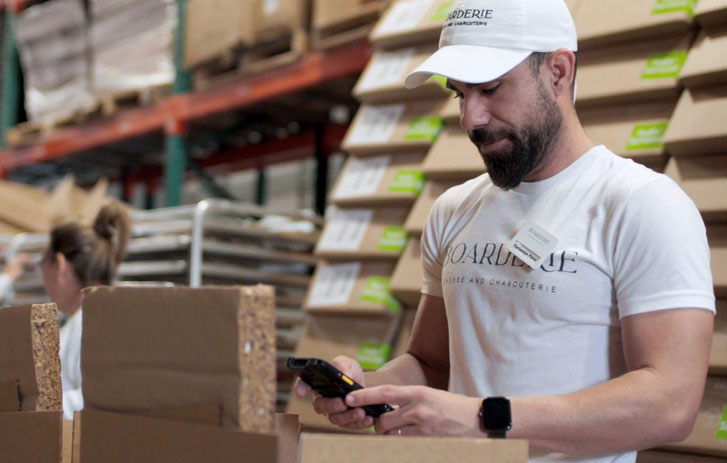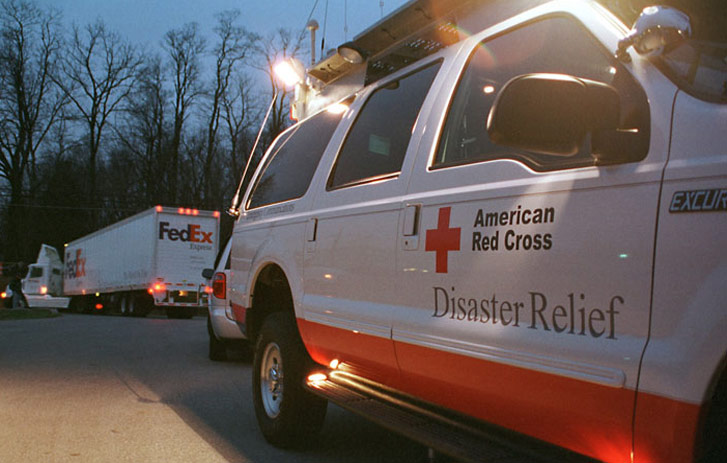Emergency preparedness checklist for small businesses
40% of small businesses do not recover after a disaster. Use this checklist to get prepared!
Developing an emergency plan is one of the most important strategic decisions you will make as a small business owner.
Consider how a natural, human-caused, or public health emergency could affect your employees, customers, and workplace. How would business operations continue? Preparing your small business doesn’t have to be time consuming or expensive.
Ask yourself the three questions to the right and use each checklist to help you prepare your business to stay in business.
1. How vulnerable would your business be if a disaster or other emergency were to occur?
- Know your region.
- Identify external emergency response resources.
2. What is your plan to protect the business and its employees and customers before, during, and after an emergency?
- Identify a planning committee.
- Update your Emergency Action Plan at least annually and ensure that vital contact information (employees, supply chain, clients, etc.) is up to date.
3. What can we do to integrate emergency preparedness procedures into our work place culture?
- Train employees what to do when an emergency happens.
- Obtain needed equipment and supplies.
- Practice your plan. Practice makes perfect and helps you test your plan’s effectiveness.
- Encourage personal preparedness among employees.
- Help your community get prepared.
How vulnerable would your business be if a disaster or other emergency were to occur?
Know your region and the types of disaster most likely to have an impact on your business.
- Find out what emergencies have occurred in the past and what impact these had on other businesses in your area. One way to do this is to review a Hazard Vulnerability Assessment (HVA) obtained from your local emergency management agency.
- Consider your facility’s physical capacity to resist damage and proximity to flood plains, seismic faults, dams, hazardous materials, nuclear power plants, and other hazards.
- Consult with your insurance agent and learn what coverage is available and what precautions to take for disasters that may impact your business. Remember, many general policies do not cover earthquake and flood damage.
Know who to contact in an emergency and how they can help. Identify and obtain agreements with external emergency response resources that will provide assistance during a disaster or other emergency.
- Local and state police
- Local government officials, emergency management office
- Local public health agency
- Local American Red Cross chapter
- National Weather Service
- Telephone, water, gas and electric companies
- Neighboring businesses
What is your plan to protect the business and its employees before, during and after an emergency?
Identify a planning committee that is responsible for developing and implementing an emergency response plan.
Write an Emergency Action Plan. Your plan should include:
- A clearly designated leadership structure that indicates who is in charge during emergency situations.
- A system for warning employees about emergencies and communicating with employees and local emergency management officials during a disaster or emergency.
- Considerations for the special needs of employees with disabilities and medical conditions.

- Procedures for communicating with employees, families, emergency response personnel and media representatives prior to, during, and after an emergency.
- Procedures for employees to follow for evacuation, sheltering-in-place, and for other area-specific hazards.
- Procedures for responding to internal medical emergencies.
- A Continuity of Operations Plan (COOP) and procedures to activate the plan.
What can you do to integrate emergency preparedness procedures into your work place culture?
Train employees. Consider partnering with community organizations to help create comprehensive preparedness training. All employees should know:
- Their role during a disaster and the roles and responsibilities of key personnel at your facility.
- Warning and communication procedures.
- Evacuation and shelter-in-place procedures.
Obtain needed equipment and supplies. Designated employees should know how to access and use safety equipment and emergency preparedness supplies:
- First aid kits
- Automatic External Defibrillators (AEDs)
- Fire extinguishers
- Smoke alarms
- Carbon monoxide alarms
- Shelter-in-place supplies
Practice your plan. Practice makes perfect. Conduct regular drills and exercises for evacuation, COOP activation, shelter-in-place, and medical emergencies.
- Use the drills to assess the readiness of your employees and your facility.
- Involve both personnel and community responders in the evaluation process and use lessons learned to improve procedures and increase training as needed.
Encourage personal preparedness among employees. Your employees will be better able to help your business respond and recover if they know how to prepare at work and home.
- Offer first aid, CPR/AED and preparedness training. Have at least 10% of your employees trained in first aid and CPR/AED skills to handle emergencies at work.
- Encourage your employees and their families to make and practice emergency action plans for their household.
- Encourage employees to identify alternate routes for going to and from your facility.
- Ensure employees keep their emergency contact information current.
- Encourage employees to have an out-of-town contact they can text or call during an emergency.
- Encourage employees to have emergency preparedness kits at work, at home and in their vehicles.
- Encourage employees to learn about the emergency plans at their children’s schools.
Help your community get prepared. Work with local community groups and government officials to ensure that your community is prepared for disasters and other emergencies. Here are just a few ideas:
- Host blood drives.
- Work with your local Red Cross chapter to train employees to serve on disaster assignments or conduct presentations on emergency preparedness.
- Contribute supplies and/or services to emergency efforts.
- Adopt a local school or school district and support their emergency preparedness programs.
About FedEx Cares: delivering for good
Delivering for Good is one way we directs our business strengths toward pressing community needs.
Through Delivering for Good, we lend our global network and unparalleled logistics expertise to nonprofit organizations with mission- critical needs in times of disaster, and to help communities heal, learn, and thrive.
For more than 25 years, we have helped the Red Cross deliver relief in response to earthquakes, hurricanes, tornadoes, fires, and floods. our support helps the Red Cross by ensuring access to relief supplies for victims of disaster through in-kind shipping and financial support.



Information in this brochure was created in collaboration with the American Red Cross Ready Rating, a free online tool to help businesses prepare for disaster and other emergencies.
Related reading

5 tips to recharge yourself and your business
Breathing new life into your business can equip you to face the competition. Check out these engaging ways to recharge your business and help it grow.
Read more
Boarderie’s recipe for success
Learn how Boarderie used e-commerce during the pandemic, partnering with FedEx to deliver fresh, artisanal cheese and charcuterie boards nationwide.
Read Article
Emergency preparedness checklist for small businesses
Developing an emergency plan is one of the most important decisions a small business owner can make. Use this checklist to help protect your business.
read moreThe American Red Cross name, emblems and copyrighted materials are used with its permission, which in no way constitutes an endorsement, express or implied, of any product, service, company, opinion or political position. The American Red Cross logo is a registered trademark owned by the American National Red Cross. For more information about the American Red Cross, please visit redcross.org
© 2021 FedEx. All rights reserved.



